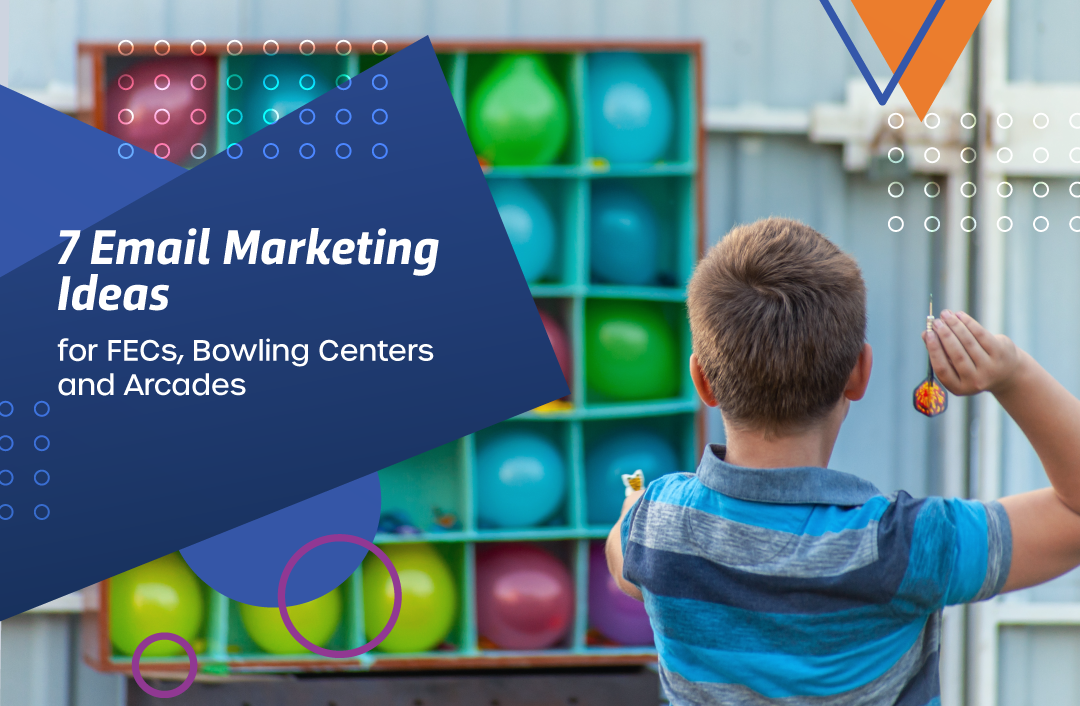Every day, you strive to learn new ways to drive brand loyalty and enhance your guests’ experience. You’re keeping up with the trends, trying new recipes, looking towards the next new attraction or new package offering – anything to differentiate your business from the ever-growing competition.
Many business owners implement loyalty rewards or membership programs to try and accomplish that, with varying degrees of success.
That’s because while it may sound simple to build a loyalty program of your own, it’s easy to get it wrong. Here are five ways your loyalty programs may be failing your business, and what to do about it.
1. Low enrollment or engagement.
We’re all enrolled in loyalty programs for everything from coffee to groceries to travel all the way to the brands that we frequent. But the ones that capture our attention the most are the ones that are the most engaging.
Do your guests know about your program? Are they enrolled automatically when they visit the first time, or must they opt in? Once enrolled, are they habitually greeted at Admissions by name and status? Do staff attempt to upsell them to reach their next reward tier?
Consider how visible and engaging your program is now, and work towards filling in the gaps. For example, frontline staff would enhance your guests’ experience exponentially if they greet them by name and thank them for being a beloved member of your loyalty program, while opening up opportunity to tailor upsell conversations.
Almost a year ago, I had an experience at a Holiday Inn that still stands out to me as a prime example of the power of staff interactions. When checking in, the front desk associate greeted me so warmly, thanking me for my return and for being a beloved Club Level member. The greeting was so special that once I got to my room, I actually looked up my account to see if I had somehow achieved status without realizing it. Turns out I was nobody – just a bottom tier member who didn’t even have any points. But the team member made me feel important, and it’s an experience that drives me to talk about them even today.
2. Complicated & difficult to keep track of.
Our attention spans are short, and few of us have the patience to try and understand overly complicated programs that are either impossible to decipher or place a ton of restrictions on what you get with your points.
While spending-based programs can be great because they offer you key insights into guest behaviors, make sure participants clearly understand how they can earn points and how they can redeem them.
3. Not rewarding enough.
In addition to the level of hassle if your program is too complicated, a participant’s level of engagement is also based on: 1) how high of a priority what you sell is to them and 2) how highly they perceive the worth of the program.
Does it take forever to get anywhere? Does it seem like they have to spend a TON of money to get anything? Much like when considering your redemption pay outs and prizes, putting loyalty reward benefits too out of reach can work against you and cause participants to perceive your business as stingy and your programs not worth it.
When building a program, it’s a good idea to engage people early. For example, offer smaller rewards at sign up and for those early-relationship key behaviors so guests feel appreciated and begin to value your program.
4. Doesn’t drive new consumer behavior.
A couple of years ago, my local burrito place implemented a new loyalty program. I simply set up my account and now every time I buy something, I get points towards a free entree. Yep, that’s it.
Even though they have my contact information, how many times do you suppose they’ve sent me an enticing offer? Zero. How many times do you think they’ve invited me to come in by tomorrow to get a free queso upgrade? Zero. How many times have they looked at my spending behaviors and, after noticing I haven’t been in for over a week, sent me a “We Miss You” message to drive me back in? That’s right, still zero.
They simply reward me for behavior that I’d have regardless. While it is a nice perk and makes me feel warmly towards them, they actually are losing money by rewarding me for behaviors I’d have anyway and not making the most of our shared relationship by driving me to take new actions.
This brings us to the last, probably most important way that programs fail:
5. You’re not maximizing your program’s full potential.
Driving new consumer behaviors through personalized offers is a critical piece of leveraging the power of your program. Time sensitive special offer emails, promotions, event invitations and upsell opportunities all help you both reward your best customers and drive revenue for your business.
Additionally, your loyalty programs offer you key data that tells you what your customers like, don’t like, how much they spend when they visit, their visit frequency and so much more. Not to mention that they offer you a captive audience to both market to and solicit feedback from.
To maximize your loyalty program’s potential, you should be regularly digging into the data so that you can create more enticing offerings and promotions and drive real results through smarter marketing.
There are so many ways you can win with the right loyalty programs, but only if they’re doing the work necessary to help you achieve real results.
Interested in learning more about how CenterEdge can help you build a loyalty rewards program for your business? Contact us at info@centeredgesoftware.com.
Search Resources
Subscribe to Email Updates
Featured Resources
Blogs //
7 Email Marketing Ideas for FECs, Bowling Centers, and Arcades

Blogs //
5 Event Types that Can Win Big For Your FEC

News //
CenterEdge Welcomes John Keys as Sales Director

Blogs //
How to Protect Your FEC’s Brand

Posts by Topic
- Advantage Payments (7)
- Brand Management (19)
- Business Growth (81)
- Capacity Management (2)
- CenterEdge News (28)
- Client Interviews (8)
- Credit Card Processing (3)
- Data & Reporting (12)
- Digital Signage (1)
- Event Management (20)
- Facility Management (10)
- Food & Beverage (8)
- Guest Experience (34)
- Guest Management (20)
- Holiday Season & Promotions (5)
- Industry Events (10)
- Inventory Management (1)
- Loyalty Programs (8)
- Marketing Tips (24)
- Operations (1)
- Point of Sale (10)
- Product Launch (11)
- Productivity (5)
- Profitability (35)
- Redemption Management (1)
- Sales (35)
- Season Passes (1)
- Team Training (60)
- Waivers (2)

Leave a Comment